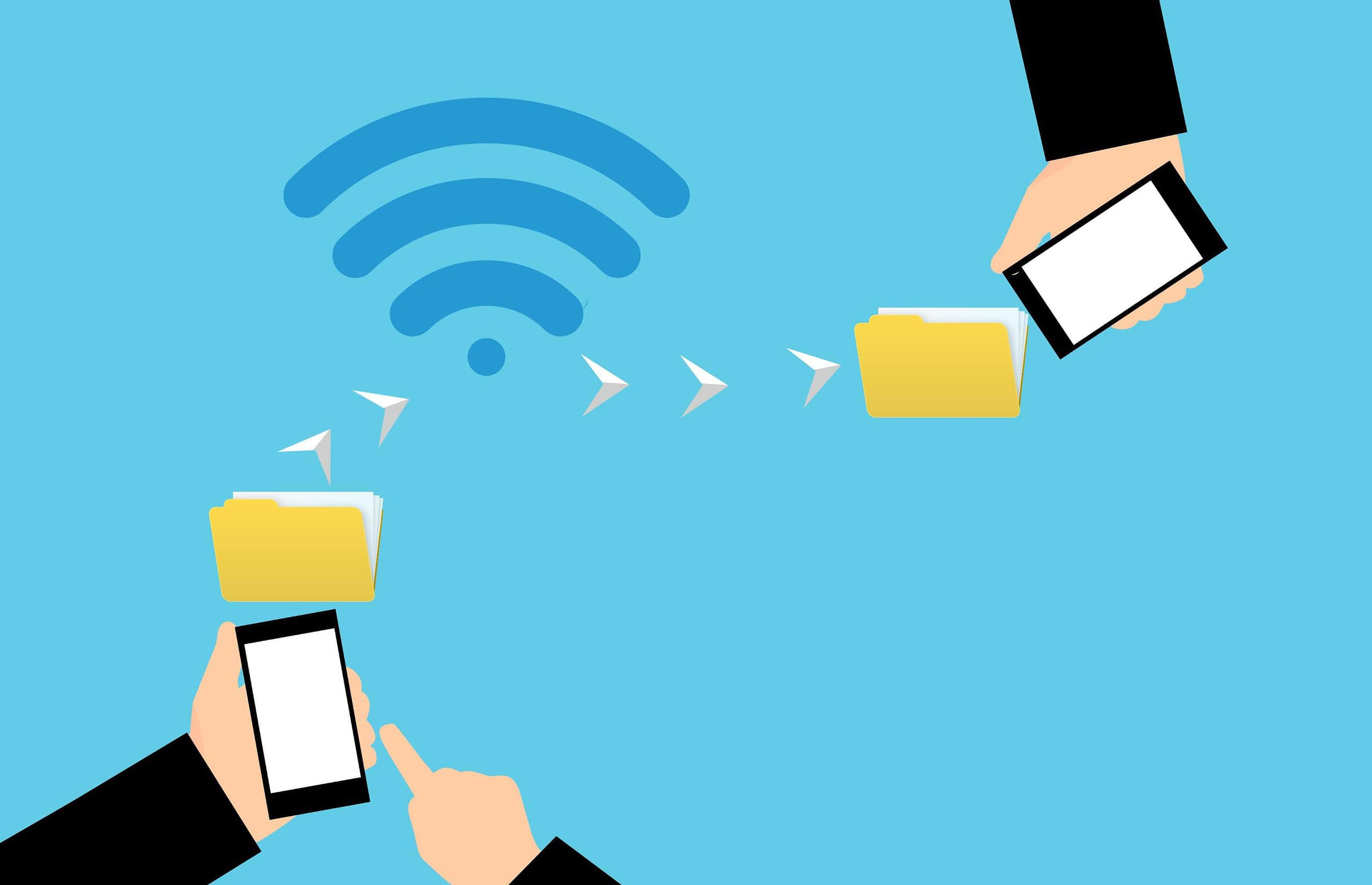Accessing files between Mac and iPhone has become essential for Apple users who want a seamless workflow across their devices. Users can access iPhone files on their Mac through multiple methods, including the Finder app, iTunes, or third-party file management tools by connecting their iPhone via USB cable or Wi-Fi.
The process varies depending on the macOS version and iOS device being used. Since macOS Catalina, Apple replaced iTunes with Finder as the primary way to view and manage iPhone files on Mac computers, making the file transfer process more straightforward.
Mac users can browse various file categories like photos, videos, music, and documents stored on their iPhone. This integration between Apple devices creates a unified experience for managing and transferring content across platforms.
How To Access Mac Files On Your iPhone
Accessing files stored on your Mac directly from your iPhone can be incredibly convenient, whether you want to view documents, photos, or other files while on the go. Apple provides several seamless ways to access your Mac files on your iPhone without third-party apps. Here’s how you can do it in 2026.
Method 1: Use iCloud Drive to Sync Files
The easiest way to access your Mac files on your iPhone is by using iCloud Drive, Apple’s cloud storage service.
Steps:
- Enable iCloud Drive on your Mac:
- Open System Settings (or System Preferences).
- Click on your Apple ID.
- Select iCloud.
- Turn on iCloud Drive.
- Optionally, click Options next to iCloud Drive and select which folders or apps to sync.
- Save files to iCloud Drive on your Mac:
- Move or save files into the iCloud Drive folder in Finder.
- These files will automatically sync to iCloud.
- Access files on your iPhone:
- Open the Files app.
- Tap Browse → iCloud Drive.
- Your synced files and folders will appear here for viewing, editing, or sharing.
Method 2: Use the Finder’s File Sharing Feature (Local Network)
You can access your Mac’s files over your local Wi-Fi network using the Finder’s File Sharing.
Steps:
- Enable File Sharing on your Mac:
- Go to System Settings → General → Sharing.
- Turn on File Sharing.
- Click the Options button, and enable Share files and folders using SMB.
- Add the folders you want to share.
- Connect from your iPhone:
- Open the Files app on your iPhone.
- Tap Browse → … (three dots) → Connect to Server.
- Enter your Mac’s local IP address or network name (e.g.,
smb://192.168.1.10). - Log in with your Mac username and password.
- Once connected, you can browse and open shared folders directly on your iPhone.
Method 3: Use AirDrop for Quick File Transfers
For quick, one-off file transfers, AirDrop is a simple way to send files from your Mac to your iPhone.
Steps:
- Enable AirDrop on both devices:
- On your Mac, open Finder → AirDrop and set visibility to Everyone or Contacts Only.
- On your iPhone, open Control Center, tap and hold the network settings card, then tap AirDrop and select your preferred visibility.
- Send files:
- On your Mac, right-click the file → Share → AirDrop.
- Select your iPhone from the list.
- Accept the file on your iPhone; it will be saved in the appropriate app (e.g., Photos, Files).
Method 4: Use Third-Party Cloud Storage Apps
If you use services like Dropbox, Google Drive, or OneDrive, you can sync files across devices.
- Upload files from your Mac to the cloud storage folder.
- Use the corresponding app on your iPhone to access and manage those files.
Tips for Smooth Access
- Both devices should be signed into the same Apple ID for iCloud syncing.
- For local network sharing, ensure both devices are connected to the same Wi-Fi network.
- Keep your Mac awake (not sleeping) for File Sharing to work.
- Use strong passwords for shared folders to keep your files secure.
Summary Table
| Method | Requires Internet? | Setup Complexity | Access Type | Best For |
|---|---|---|---|---|
| iCloud Drive | Yes | Easy | Cloud-synced files | Seamless access anywhere |
| Finder File Sharing (SMB) | No (local network) | Medium | Local network sharing | Access large files without internet |
| AirDrop | No (Bluetooth/Wi-Fi) | Easy | One-time transfers | Quick file sharing |
| Third-Party Cloud Storage | Yes | Easy | Cloud-synced files | Cross-platform file access |
Key Takeaways
- Connect iPhone to Mac via USB or Wi-Fi to access files through Finder or iTunes
- Browse and transfer photos, videos, music, and documents between devices
- Select compatible apps to share and manage files across Mac and iPhone
Methods of Accessing iPhone Files from a Mac
Apple provides multiple ways to access and manage iPhone files from a Mac, ranging from wireless solutions to direct connections that offer varying speeds and convenience levels.
Using iCloud Drive
iCloud Drive enables wireless file access between Apple devices. Users need an Apple ID and sufficient iCloud storage space to get started.
Files sync automatically across devices once saved to iCloud Drive. This works for documents, photos, and other supported file types.
The setup process requires enabling iCloud Drive in Settings on the iPhone and System Settings on the Mac. Users get 5GB of free storage, with paid upgrades available for more space.
Direct Connection with USB Cable
A USB cable offers the fastest and most reliable file transfer method. Users simply connect their iPhone to the Mac using the appropriate cable – Lightning or USB-C depending on the iPhone model.
Modern Macs running macOS Catalina or later use Finder for file access. The iPhone appears in the Finder sidebar when connected.
Files transfer at USB speeds, which is ideal for moving large files or backing up data quickly.
Leveraging AirDrop for File Sharing
AirDrop provides quick wireless file transfers between Apple devices. Both devices must have Wi-Fi and Bluetooth enabled.
To use AirDrop:
- Turn on AirDrop on both devices
- Select files to share
- Choose the target device from the AirDrop menu
- Accept the transfer on the receiving device
This method works best for sending individual files or small groups of files.
Utilizing Handoff for Continuity
Handoff lets users start tasks on one device and continue on another. This feature works with Apple apps like Safari, Pages, and Numbers.
Requirements include:
- Same Apple ID on both devices
- Bluetooth enabled
- Wi-Fi connected
- Devices within close proximity
The feature appears as an icon in the Dock on Mac or the App Switcher on iPhone.
File Management via Finder
Finder replaced iTunes as the main tool for iPhone file management on Mac. This change started with macOS Catalina.
The Finder interface shows:
- Device storage information
- File management options
- Backup controls
- Sync settings
Users can drag and drop files between devices or use the file browser to locate specific items.
Third-Party Professional Tools
Professional file transfer tools offer additional features beyond Apple’s built-in options. These apps often include:
Key Features:
- Batch file transfers
- File conversion tools
- Advanced search capabilities
- Data recovery options
Popular options include iMazing, AnyTrans, and MacDroid. These tools often require a paid license but provide more control over file management.
Frequently Asked Questions
File sharing between Mac and iPhone offers multiple methods including AirDrop, iCloud Drive, and USB connections. Each method provides specific benefits for different use cases and transfer needs.
How can I transfer files from my Mac to my iPhone via AirDrop?
Turn on Bluetooth and WiFi on both devices. Click the AirDrop icon in Finder on Mac.
Select the files to transfer. Drag them to the iPhone’s name in AirDrop.
Accept the transfer on the iPhone when prompted. Files will appear in the relevant app or Files app.
What steps are needed to wirelessly transfer files from a Mac to an iPhone?
Enable iCloud Drive on both devices through Settings/System Preferences. Sign in with the same Apple ID.
Select files on Mac to sync. Move them to the iCloud Drive folder.
Access files through the Files app on iPhone by tapping Browse > iCloud Drive.
Is it possible to access Mac files on an iPhone using iCloud?
Files stored in iCloud Drive sync automatically between devices. Open System Settings on Mac and enable iCloud Drive.
Store Mac files in iCloud Drive folders. They will appear on iPhone in the Files app under iCloud Drive.
Files remain accessible as long as both devices have internet connectivity.
How can I access iPhone files on a Mac without using iTunes?
Connect iPhone to Mac with a cable. Click “Trust” on iPhone if prompted.
Open Finder on Mac. Select iPhone from sidebar under Locations.
Browse and manage iPhone files directly through Finder windows.
What is the process to transfer files from a Mac to an iPhone using a USB connection?
Connect iPhone to Mac using a Lightning or USB-C cable. Unlock iPhone and trust the computer.
Open Finder and select iPhone. Navigate to the Files tab.
Drag files from Mac to the appropriate app folder on iPhone.
How do I access files from my MacBook on my iPhone?
Turn on iCloud Drive in System Settings on MacBook. Enable it in iPhone Settings too.
Save files to iCloud Drive on MacBook. They sync automatically.
Access files through the Files app on iPhone by selecting iCloud Drive.







